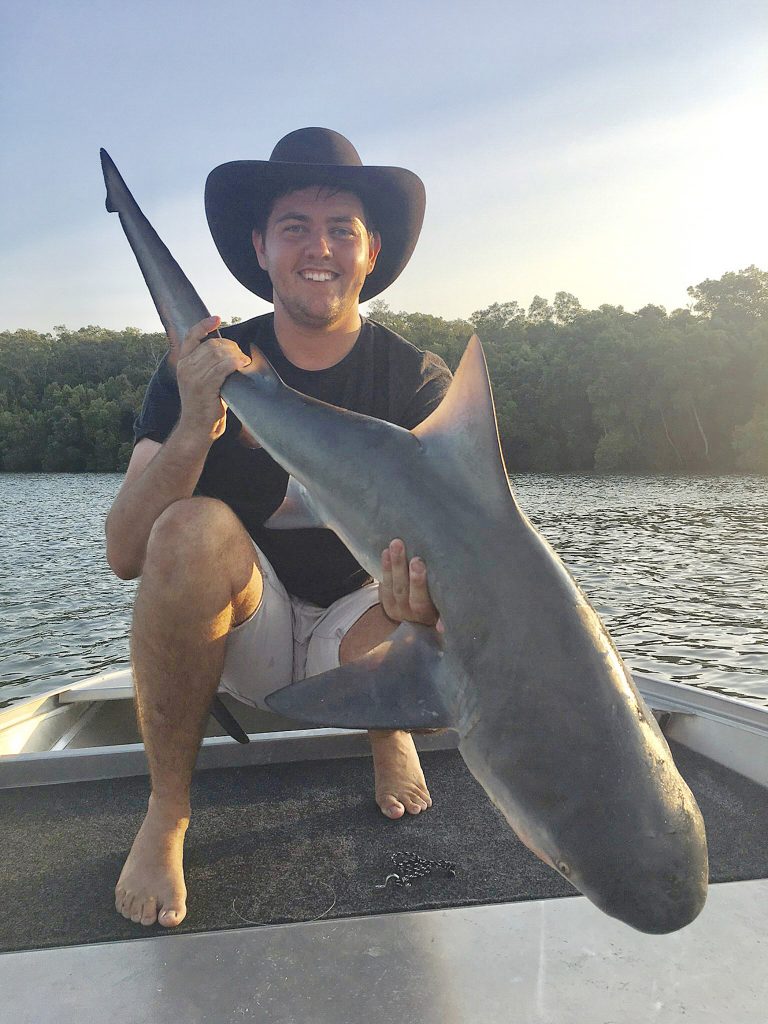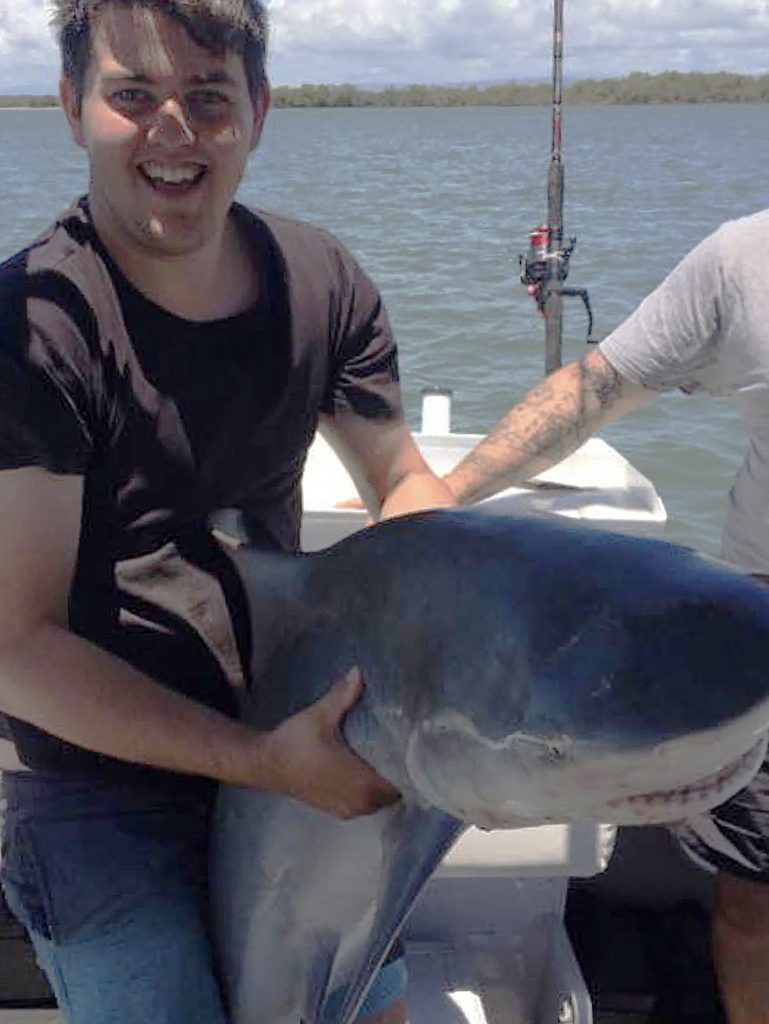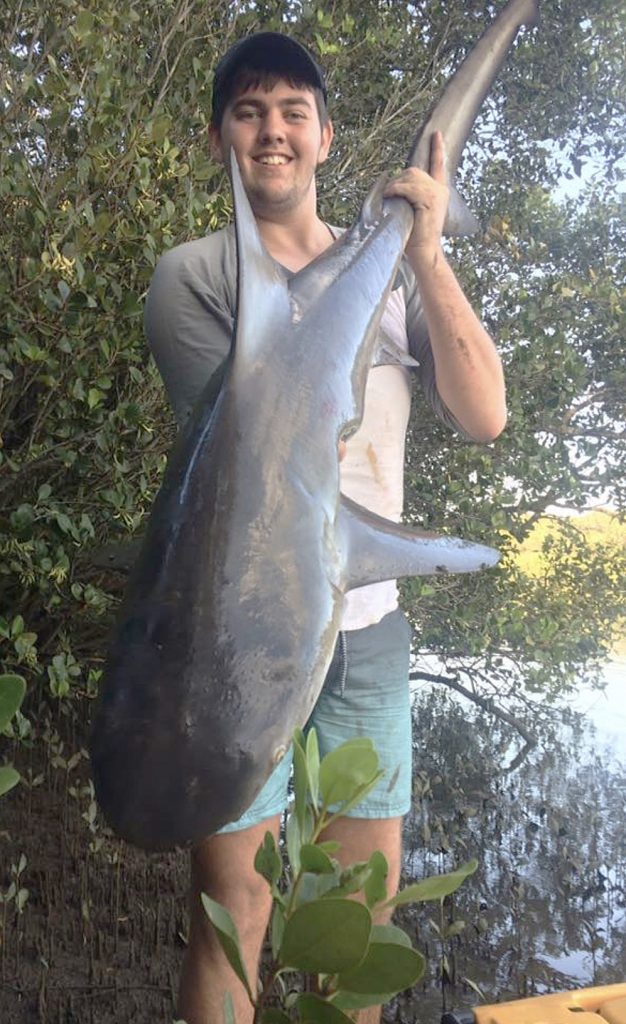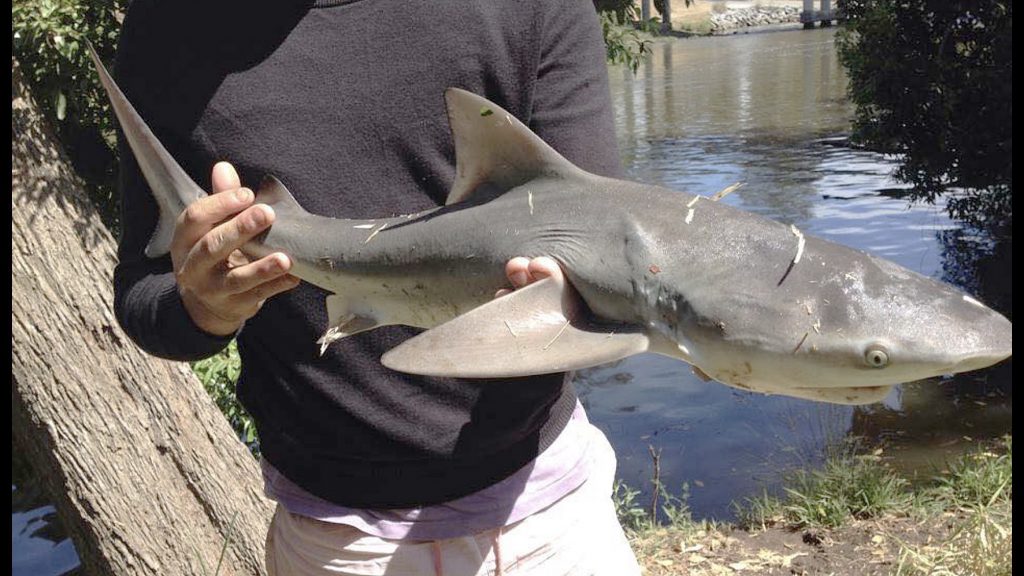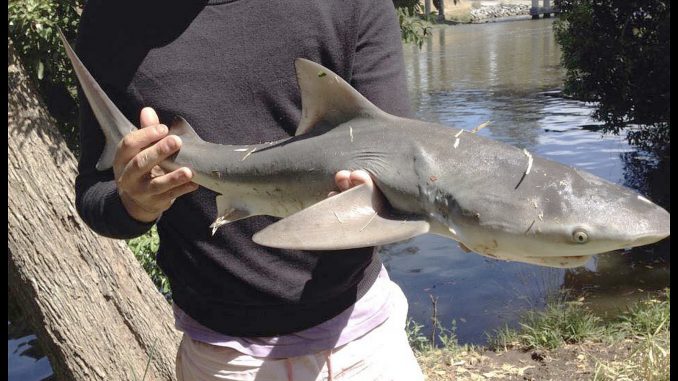
by Aaron Walker •
Sitting back on a lazy Saturday watching various fishing shows on offer is something we have all done to itch the scratch that is our fishing addiction. Everyone loves dreaming about hooking onto some line burning action, hearing the drag sing its beautiful song. But weekend time is often limited and the chance to load up and head miles offshore is often a luxury we can’t all indulge in.
However, often we overlook the array of sizeable predators that lurk the local rivers, which are often on our doorsteps. One such creature that can deliver intense and prolonged battles, get the adrenaline pumping, test even the best terminal tackle and be caught in just about every river system up the Australian coast is the bull shark.
Bull shark are an aggressive hunter and available to just about every angler. Sharks around 1-1.5m provide a fantastic battle on lighter gear, with smaller specimens being great on the dinner table too.
A key point if you’re interested in eating bull shark is to aim for the smaller specimens with it being paramount the shark is bled, otherwise you’ll have a mouth of flesh that tastes similar to glass cleaner.
Tackle
The equipment required to chase these local beasts does not need to be expensive. A size 4000 spin reel, loaded with 20lb braid and rigged up to a 4-8kg roughly 6-7ft rod is absolutely ideal. My go-to setup consists of a Shimano Stradic 4000 running 20lb braid on a Daiwa TDT71HXS rod.
As far as rigs go, there are many companies around that supply affordable and high quality pre-made shark rigs. A 10/0 hook paired with a mono covered 130lb wire is a great starting point and will result in some great catches. It is always worth having a few rigs ready to go, as the rivers are also home to many bull sharks that can exceed 3.5m in length, which will be unforgiving on your rigs.
A good set of long-nosed pliers or even a specialised hook removal tool is essential if you want to go home with as many fingers as you left with. I remove the barb from my hooks in order to make this process easier on myself, and the shark.
Location
A trait of bull sharks is their ability to regulate salt intake, that trait allows this apex predator to travel far upstream into entirely freshwater. Brackish areas do hold a good population of sharks, but moving further downstream will provide greater odds. For land based anglers, pontoons and jetties are your go to starting points.
A favourite spot of mine is the junction between the Logan and Albert rivers. This clash of two river systems on an outgoing tide creates many eddies that stir up many bait species and in turn attracts the sharks.
Any place you can access a tidal river, such as the Logan, Brisbane, Bremer, Pine, Albert will provide results. It is always worth trying to identify an area that has something special, this could be in the form of a junction, large bend, Ledge, Channel or a bank producing eddies. If you can identify a spot such as this, then persist, the sharks will navigate the river and feed in these areas.
Baits
If the bait is fleshy, it will probably work. Ask any shark angler and they will tell you the go-to bait is freshwater eel cut into small 15cm fillets. Eel does seem to prove itself time and time again to be an outstanding shark bait. However, a hole mullet cut in half or filleted, stingray flaps and even ox heart will yield results.
Techniques
The techniques used to effectively target bull sharks, depend mostly on tide movement. The most rewarding technique for me is having a balloon attached to the upper swivel with 12lb mono, allowing the bait to sit roughly 2m below the surface. Nothing quite beats the visual sensation of the balloon violently jerking below the surface and the realisation that only metres from where you are standing, an angry apex predator was actively feeding and you didn’t know it was there. The mono on the balloon will break away allowing you to fight the shark.
However, a balloon is not essential, and if the tide is slow, the balloon may not be practical. Instead, simply aiming for a long cast into your desired spot and allowing the bait to sit on the bottom would be suitable. For both methods, it is ideal to set your drag so line can be freely taken, allowing the shark to devour the bait without feeling resistance. Count to ten…then tighten the drag and hold on.
Now is the time of the year to get out and target these river-based beauties. Before you know it, you will have developed your own preferred technique and have a go-to spot which will consistently produce.
Best of luck and tight lines.

